#izumi sakurai
Explore tagged Tumblr posts
Text
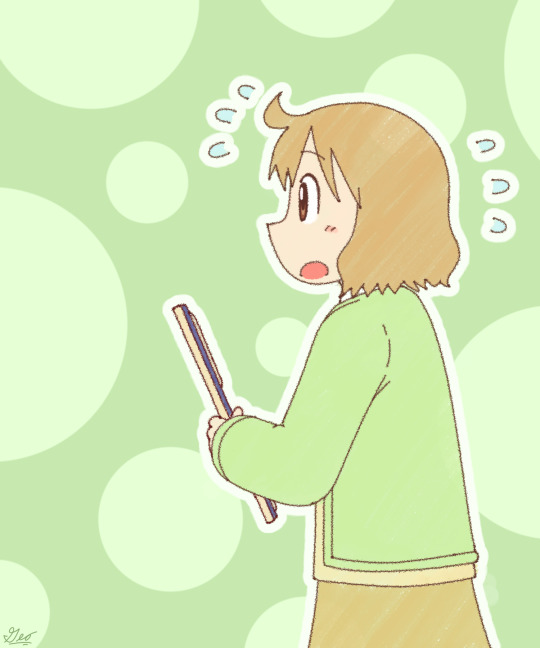
'Tis the Sakurai! :D
(Whoops, forgot to post this piece here when I finished it, lol)
55 notes
·
View notes
Text

Just 2 Nichijou druids hanging out and blushin. (Izumi Sakurai, Manabu Takasaki) This was my drawing in 2021 for the Nichijou fan zIne that I worked on. I bit off a lot more than I could chew in that project and realised that projects like that weren't for me. u_u So I don't plan to do this again, at least not with a group, I realised I'm very much a solo worker. 🍓 Enjoy!
Online shop: https://jennguine.etsy.com Instagram: https://www.instagram.com/jenipuff/ YouTube: https://www.youtube.com/@jenipuff
#nichijou#my ordinary life#izumi sakurai#manabu takasaki#anime art#anime#anime fanart#jennguine#jennipuff#jensartwork#druid#fantasy art#fantasy illustration#fantasy#fantasy character#creature design
43 notes
·
View notes
Text

Izumi Sakurai goes shopping
134 notes
·
View notes
Text

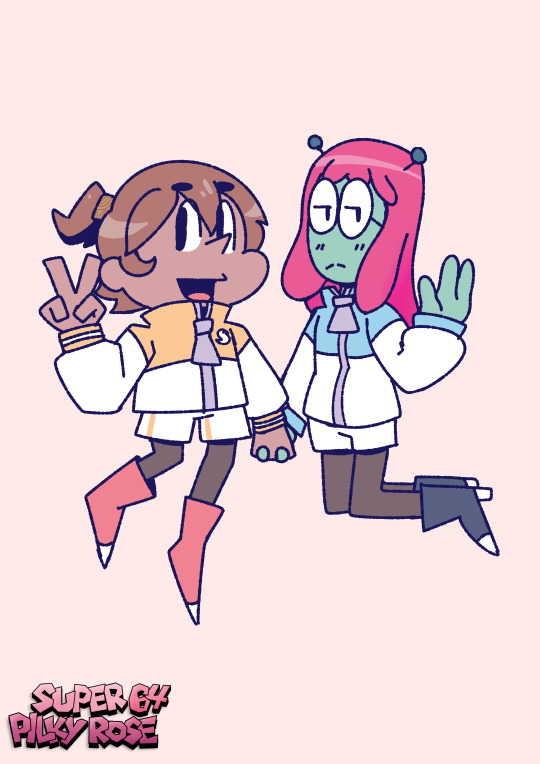

Some older Nichijou art
25 notes
·
View notes
Text
I love giving people eye cancer with my drawings

24 notes
·
View notes
Text
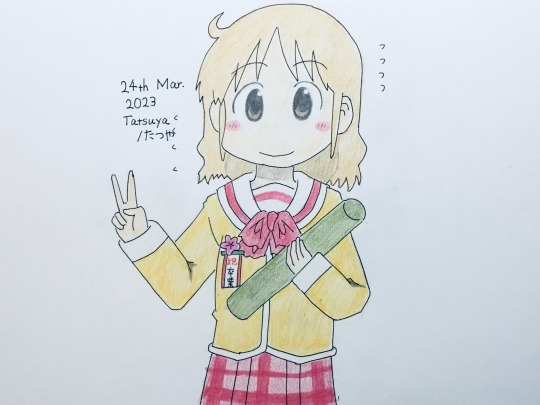
Izumi Sakurai in her graduation ceremony
From Episode 23 for 恩師の日 仰げば尊しの日 / Day for Teachers and the song for graduation ceremony
35 notes
·
View notes
Text

Sakurai Izumi x Takasaki Manabu
Nichijou
14 notes
·
View notes
Text

new pfp
#tumblr milestone#nichijou#Izumi Sakurai#pfp#new pfp#pretty#manga#anime#日常#sorry if im adding too many tags idk what to put
5 notes
·
View notes
Text

Sakurai-sensei
3 notes
·
View notes
Text

finally getting back to doodling characters after some bit of time, wee
take some of these ones during this time 👀
7 notes
·
View notes
Text
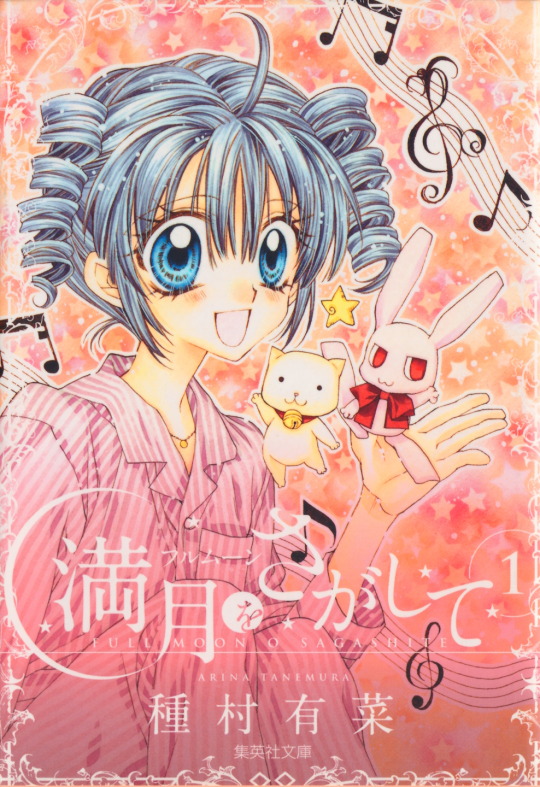

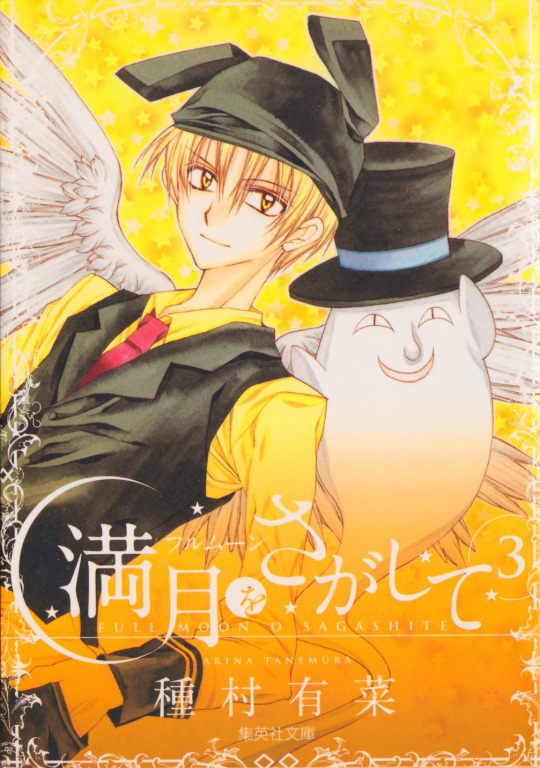

Full Moon wo Sagashite ~ Manga Bunko Reprint Covers ~ Official Arts by Arina Tanemura ❤
HD Version here 1 | 2 | 3 | 4
Scanned by KuRo93
#fmws#full moon wo sagashite#izumi rio#mitsuki koyama#meroko yui#eichi sakurai#takuto kira#shinigami#tanemura arina#arina tanemura#official art#scan#mahou shoujo#majokko#kuro93
39 notes
·
View notes
Text

7 notes
·
View notes
Text
Full Moon Pngs from Alice Closet
This is my gift to the fandom this year. xD
Ideas on what to do with these:
Paper dolls, digital dolls, avatars, fanart, etc.
YOU ARE WELCOME.

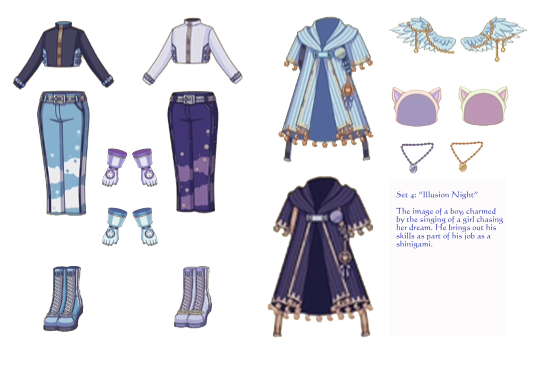

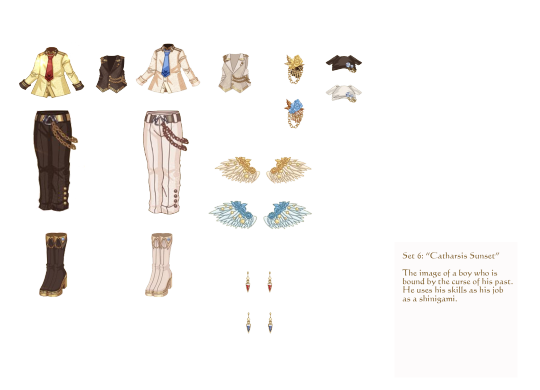
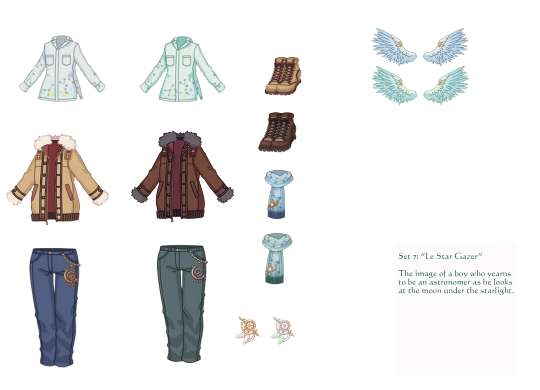
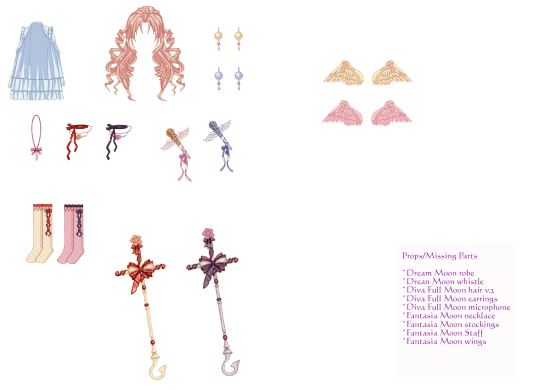
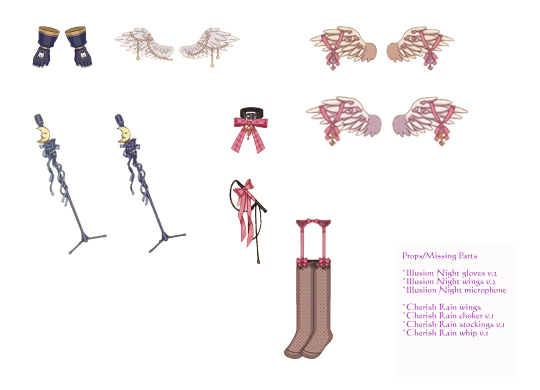
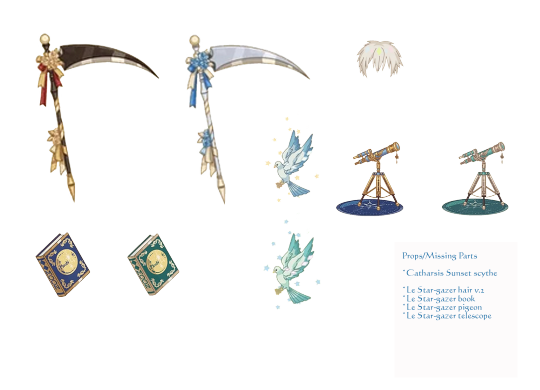
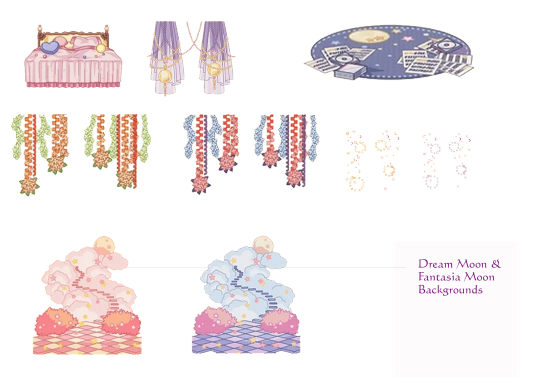
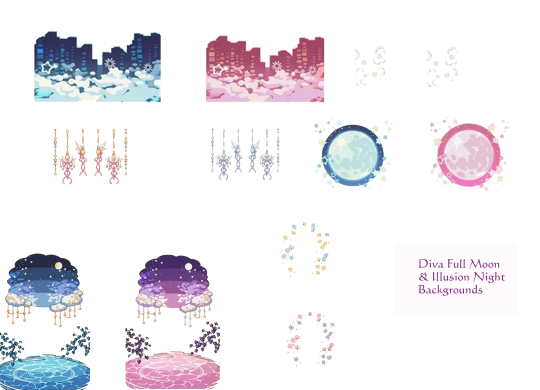

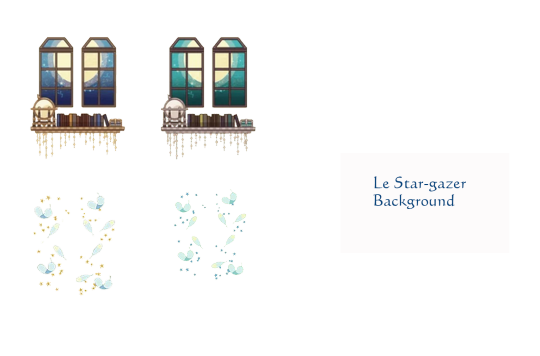
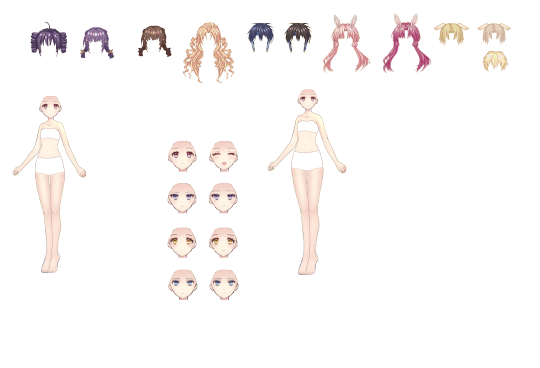
#full moon wo sagashite#mitsuki kouyama#arina tanemura#meroko yui#full moon o sagashite#shinigami#shoujo anime#magical girls#takuto kira#izumi rio#eichi sakurai#alice closet
25 notes
·
View notes
Text
An Ajin Manga Review: Sato Was Never Defeated
Gamon Sakurai's weakest point in writing Ajin was that Sato was never defeated by Kei, but instead gave up in the end. Sakurai explains Sato as one who allows his sense of entertainment to lead his life. Sakurai demonstrates Sato's need for a stimulating challenge in chapter thirty when he endangers his extremely important rescue mission for the sake of fun.
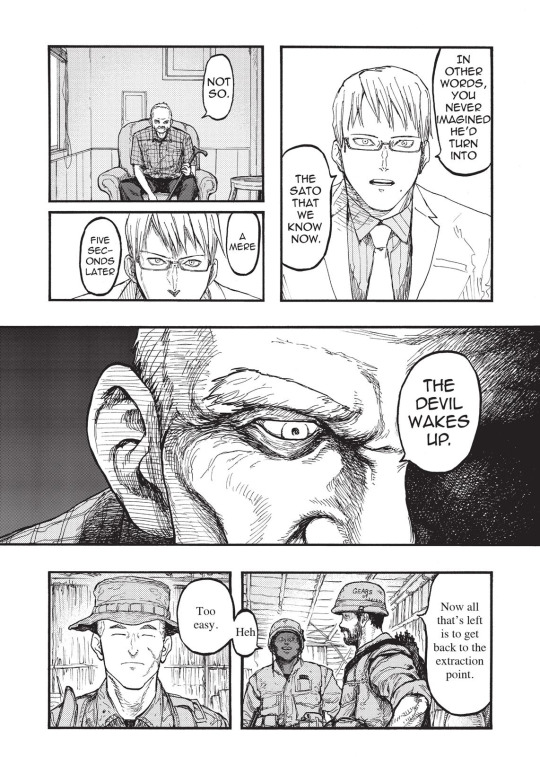
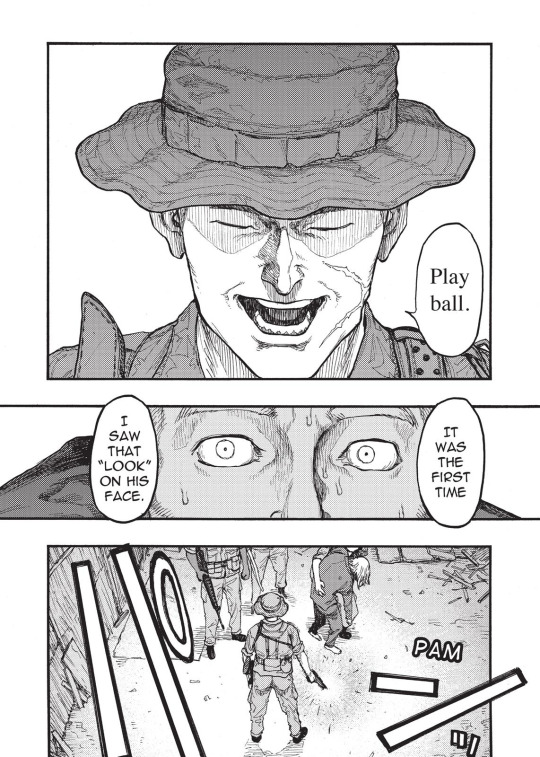

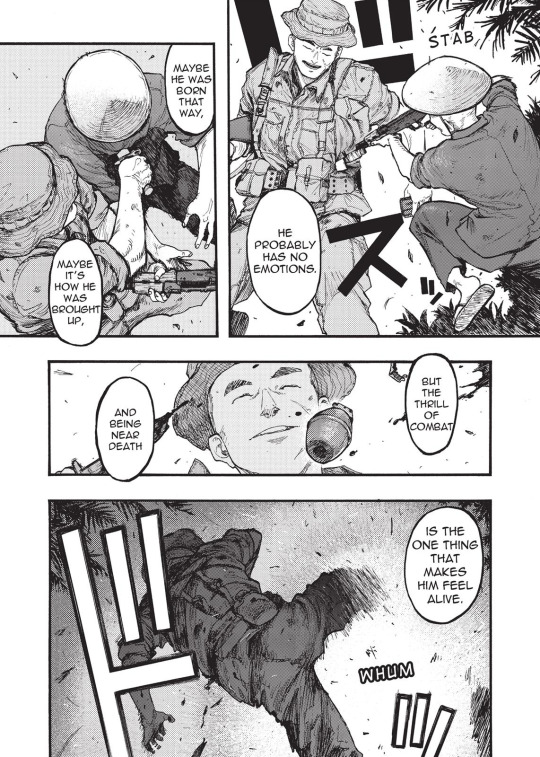
He endangers all of his teammates as well as the rescued prisoner. The stakes that Sakurai has set here, which include multiple lives and Sato's career, encompass the sacrifices Sato will make to entertain himself. As a person, he will readily enter the most dangerous fires if it means he will have fun. Sakurai reiterates my observations with the final pages of chapter thirty, when Sato's dad reprimands him and tells him that life should not be treated as a game, or something trivial and taken lightly.
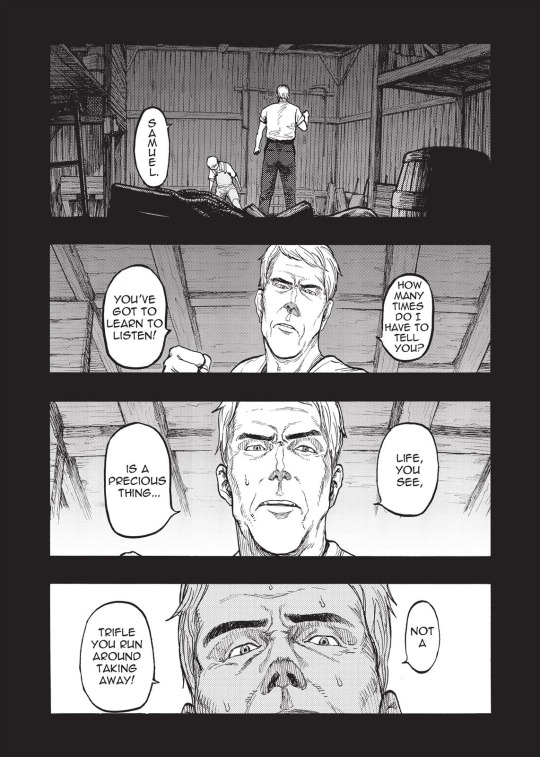
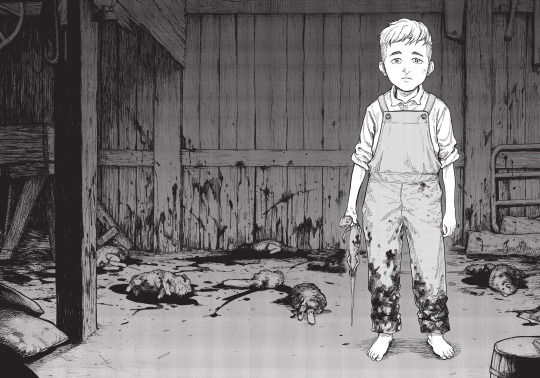
Sato's nature, to see life as a game, and his use of his own and others' to violently entertain himself, leads his motivations throughout the story. I argue that Sato only used the Demi-Human crisis as a conduit for his bloodlust. While such a point seems obvious on the surface, I mean to expel any possibility that he cares even a small bit for Demi-Humans and the growing violence against them. Sato, as a villain, has only one role to play within Ajin: to be the foil of Kei Nagai. Foil here means that both Sato and Kei lack empathy for other people, but they both presents this trait in different ways. Often times, foils are opposite of one another. The narrative focuses around Sakurai's exploration of a moral battle about human empathy. He uses the DH crises as a backdrop of the moral battle occurring between the two. Therefore, I argue that Sakurai uses Sato and Kei Nagai to demonstrate how human rights crises can often be used as covers for battles between powerful individuals' egos.
Throughout the narrative, Sakurai places the general public and the government's focus directly on the Demi-Human humanitarian crisis in Japan. Journalists and political activists argue about the violent extent of anti-DH laws. In online forums, regular people react to the news and viral videos about DHs; some joke, but most refute the idea that DHs face any sort of violence while within government custody. Actual government officials take Sato at face value and argue to ignore Sato's demands and focus on continuing their cruel behavior. The government then aims to more harshly punish and violate DHs in reaction to Sato's crimes and demands.
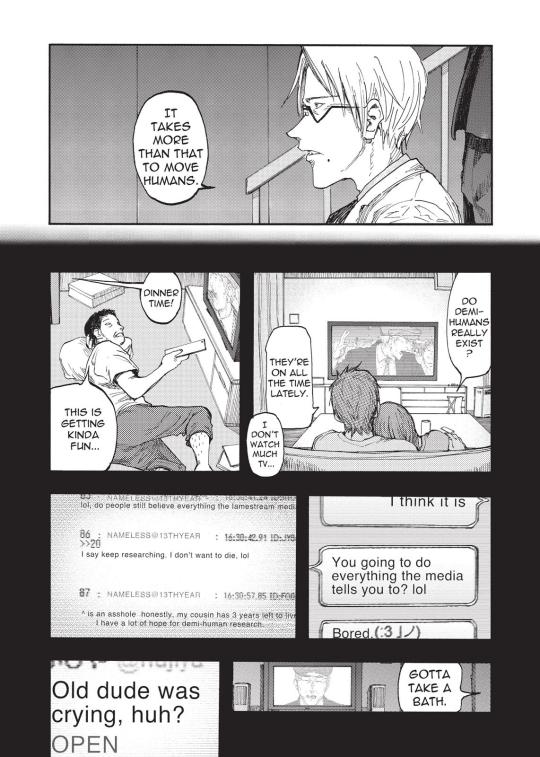
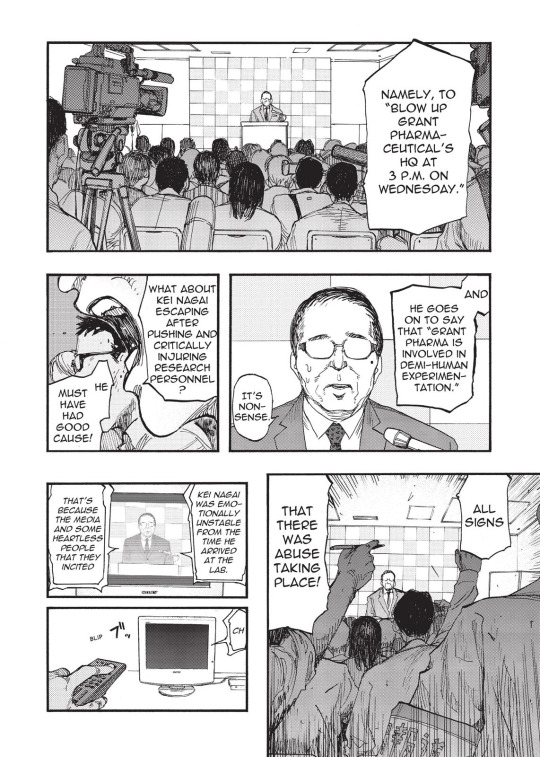
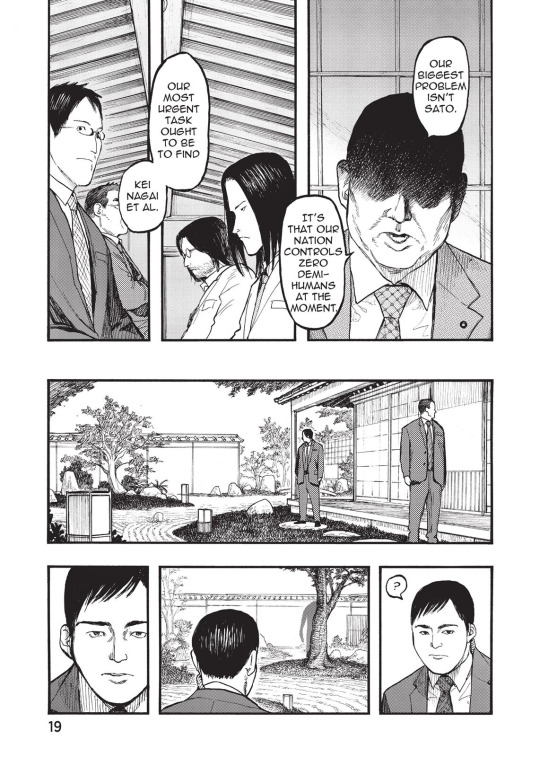
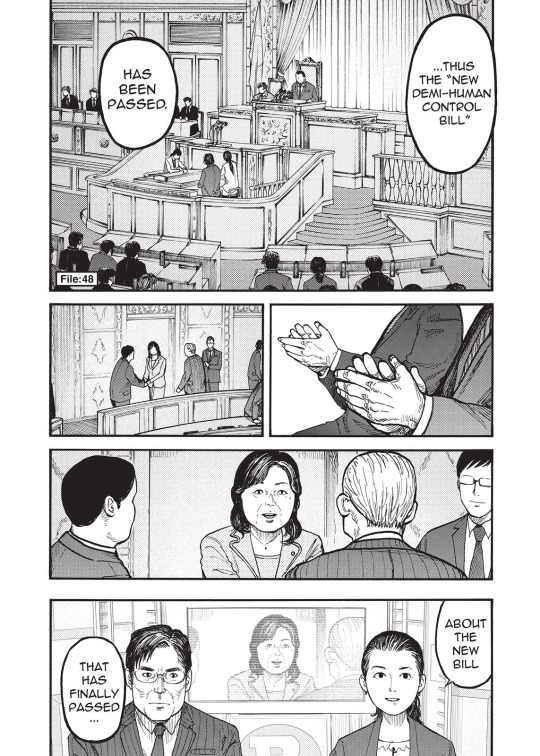
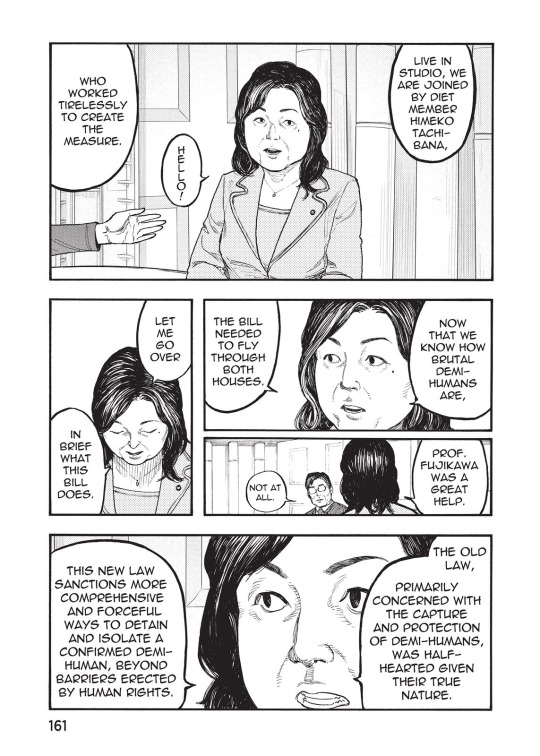
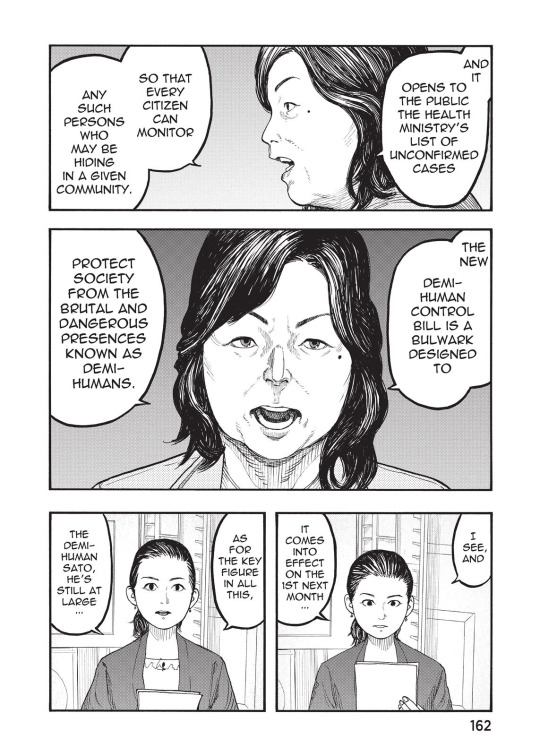
Through pages such as the ones provided, Sakurai demonstrates that Sato nor Kei act as the government and public's main concerns. Instead, Sato nearly single-handedly fuels Japan's arguments and attitudes about the DHs. Sato's claims of the government torturing DHs, his terrorist attacks, and his online uploads only inspire Japan to focus on DHs, not himself, as a subject of discussion. The discourse hinges on the questions: what does Japan do about the DHs?; are they allowed to live fulfilling lives?; should the government more viciously hunt DHs down? Sakurai depicts a Japan that says yes. The DH Control Bill represents an oppressive government's readiness to punish all those who they feel do not belong in their society. Sakurai also heavily criticizes governments' ties to corporations and the greed that prospers between these institutions. While the government denies that DHs were ever tortured, they also expeditiously pass laws that punish any and all DHs in reaction to one person's terrorism.
Despite his blatant commentary on the ways a society can trample on the human rights of oppressed groups, Sakurai focuses Ajin's narrative on Sato and Kei more than anything. All the details expressed above occur in the background of the narrative.
Japan denies that a DH human rights violation has occurred, while simultaneously denying DHs humanism. Throughout the narrative, the government takes egregious actions against DHs. Sakurai rarely shows any DHs beyond the main cast that suffer from these laws. Kei’s death in the first volume and Izumi’s backstory does show the reader the public’s general knowledge that DHs can be turned in for a ransom. Yet, beyond Izumi and Kei, Sakurai does not depict any other DHs fleeing or suffering from the violent laws being passed in the background of the narrative.
Sakurai has no need to show any background stories of DHs suffering. The story focuses on the battle between Sato and Kei most of all. Each story arc revolves around conflict between Sato and Kei. Every other character involved may be seen as simply being collateral damage in the battle between the two of them. Sakurai does not need to depict any other DHs suffering from the aggressive and violent laws made to oppress them, because that's not the point. Sakurai purposely depicts a society caught in the midst of an ego battle between two people. Chapter thirty-one begins with a neat illustration of my argument. The DH rights crisis appears in the literal middle of illustrations of Kei and Sato's battle of egos.
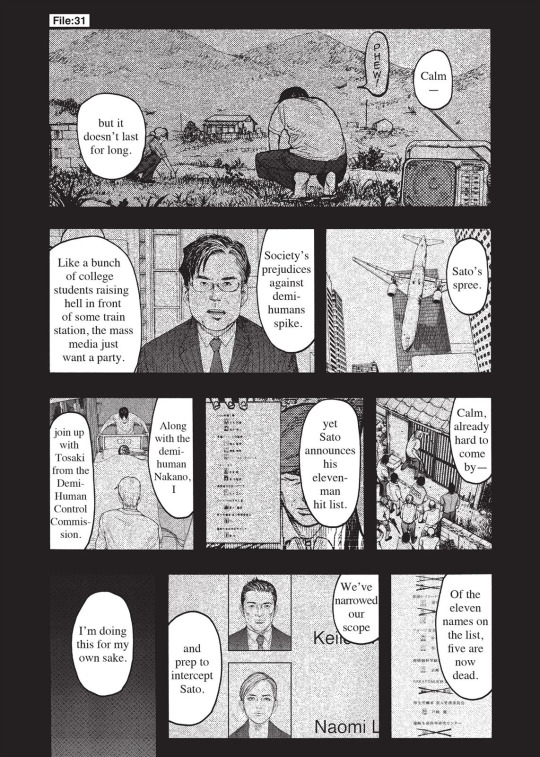
Sato's terrorist attacks act as nothing more than extensions of his own ego. As argued above, Sato does not care even a little about DH rights. He uses the DH humanitarian issue as a catalyst to fuel his need for bloody entertainment. Sakurai overtly depicts Sato as a character with no regard to the importance of life at any capacity.
Sato's bloodthirst and role as an aggravator for a humanitarian crises sets him up to be a morally bankrupt symbol of militaristic power. He pretends to act in the interest of an oppressed minority group while actually only satisfying his bloodlust. Sato's defeat therefore represents a victory in favor of the defense of life and its importance. Also, an expulsion of false actors in the fight for oppressed peoples' freedom from oppressive governments. More on the implications of Sakurai's ending later.
Sakurai uses Kei to depict his idea of what a struggle between an emotional and purely "rational/logical" perspective of the world looks like. I place rational and logical in quotations because even in-narrative, this terms takes on different meanings. At one point, a rational decision means acting in one's most favorable odds of success. In another moment, Kei breaks this rule and declares it to mean acting in a way to gain more favorable odds for one's goals. Instead, I will refer to the "logical" side of Kei as lacking empathy, because that's what Kei's attitude actually demonstrates.
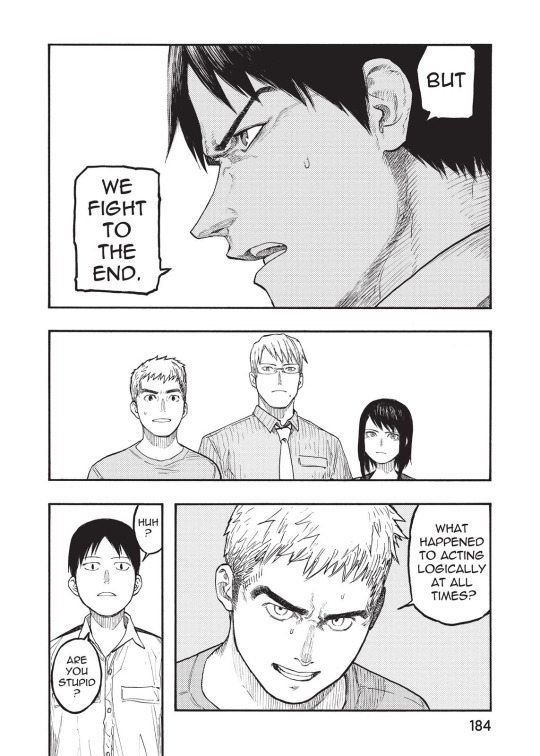
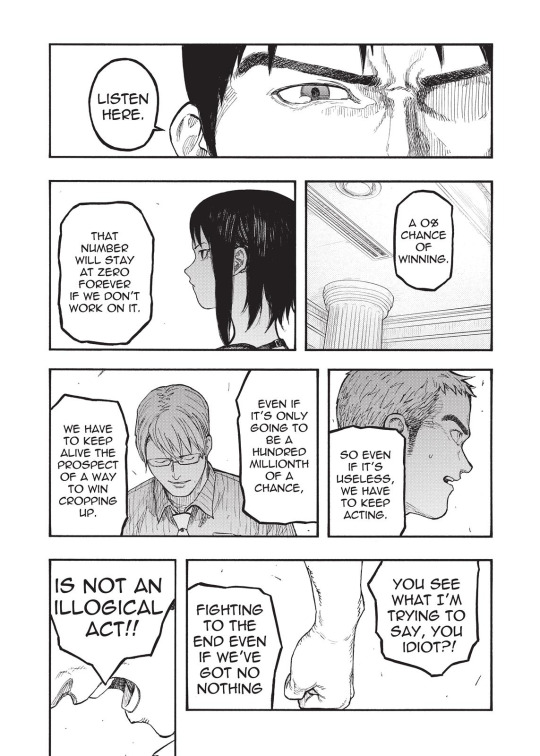

Kei wants to be cold and distant. He feels life would be easier if he could be aloof and above any emotional issues that naturally occur in relationships with other people. He pretends to be above emotional responses to other's pain. In a way, Nakano acts as Kei's foil just as much as Sato. If Sato represents Kei's inability to completely detach himself from his natural empathy, Nakano represents Kei's inability to fully tap into his those feelings. While Kei lacks empathy, he does not see life as a game like Sato does. Kei still believes in an inherent value in life or being alive. Kei still goes out of his way to help others, even when it inconveniences him and his plans. For example, Kei returns to save the grandma who he stayed with, even though he was ready to escape with Nakano and leave the countryside behind. He refuses to explain his actions to Nakano, or even show himself to the grandma, revealing the selfness nature that he shares with Nakano.
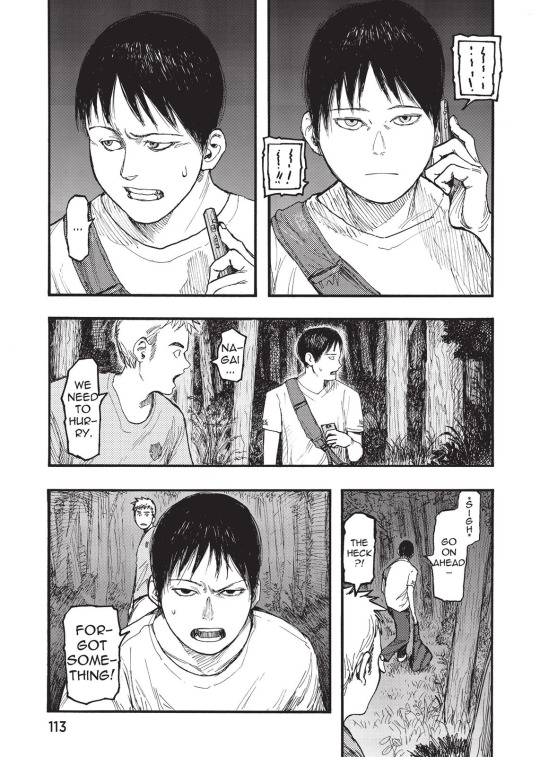


Nakano consistently commits to selfless acts in the name of simply helping people. He expects nothing in return for his deeds, nor does he ever express a desire to be seen as a hero. Nakano cries for the sake of the others who have died, and who will die, declaring that he will always give his life to those who need him, no matter what.
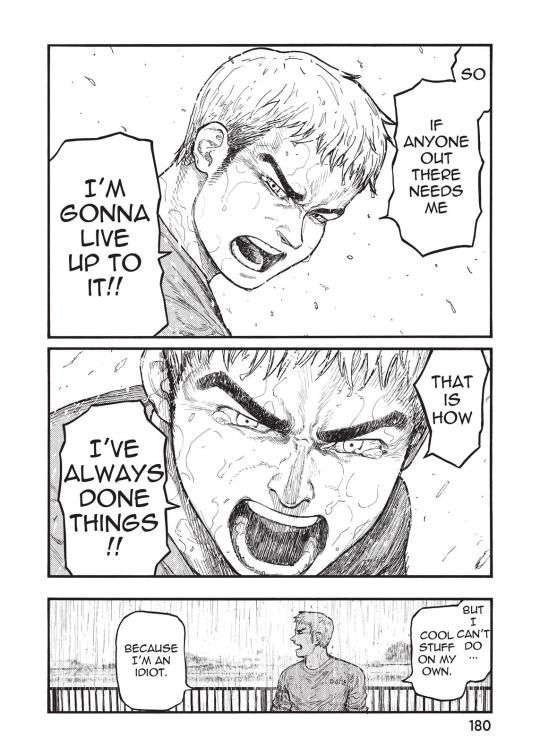
Nakano represents Sakurai's idea of an extreme empathy for other people. He seriously considered Sato's proposal to improve the lives of other DHs, and once that was proven false, he committed himself to stopping Sato's terrorism, exemplifying his highly empathetic nature for other humans. Kei rests at the center of extremes that Sato and Nakano represent. Sakurai uses Kei's mother to demonstrate Kei's personal conflict between a cold demeaner and empathetic reasonings. In the second panel in page twenty-eight, Kei's mother even directly rebuffs Nakano's desire to care for everyone. Sakurai purposely places Kei in the middle of Sato and Nakano's empathetic extremes.
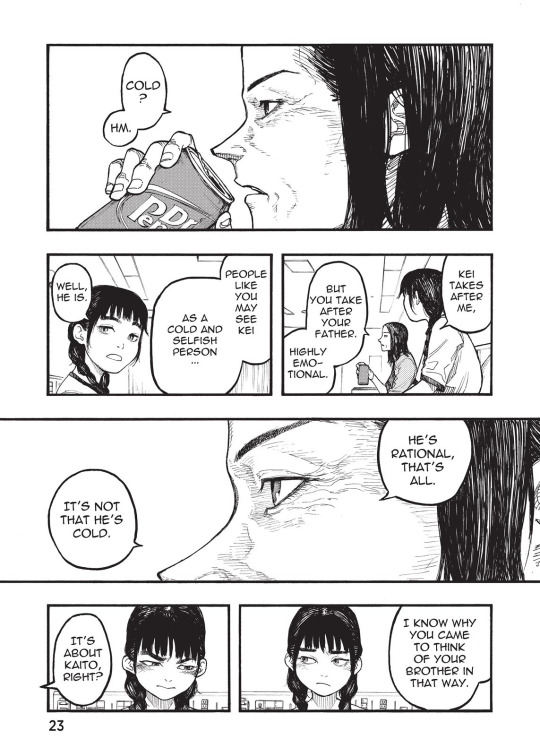

Instead of focusing on Kei as Sakurai's exploration of a balanced moral code, I want to shift focus back to Sato's end. I have thus far agued that Sato never cared about any other DH while he committed terrorist attacks. To reiterate my argument, I have shown evidence that Sakurai's depiction of the DH humanitarian issue plays a background role, while Ajin's narrative instead focuses on the battle between Sato and Kei. Sato's attacks only end on one condition: once he gets bored. He does not complete the hit list because he gets bored of it, same with the suicide plane attacks in the last arc. His motivations center around his need for violent entertainment, which Kei's challenges stimulate. In the end, when Sato is stopped, it's only after he's done doing everything he wants. Essentially, Sato does not lose, he simply satisfies himself. He reaches game over of his terrorist attack speedrun.
Sato's self-inflicted game over does not meet the stakes Sakurai set for Sato as a villain. As I argued above, Sato's defeat represented a victory in favor of the defense of life, and an expulsion of false actors in the fight for oppressed minorities against oppressive governments.
Given that Sato represents the worst of humanity, a powerful being with zero empathy for others, I find it distasteful for him to be allowed to commit egregious acts of terrorism on a whim and hardly suffer any consequences. Sato's unconscious body only receives an indefinite prison sentence. Because Kei simply knocked him out, Sakurai alleviates Sato of having to directly face any moral judgements from other characters. The rest of the cast do not get to voice their grievances directly to him. Honestly, it's not like he would care one way or another anyway. Sato reads to me as a power fantasy character. Not to say that he's Sakurai's power fantasy, or a projection. Just that he fits the model of one (extremely capable and undefeatable). Sato doesn't care about laws or consequences of his actions, and instead solely cares about his own entertainment. Not his own well-being, or anyone else's.
Sato allowed Kei to rush him into the river and possibly knock him unconscious. In the end, it was his decision to be caught. He was never defeated. He simply gave Kei the chance to win on the foundation of a desperate wager.
What does it mean for Sakurai to create a story in which the morally bankrupt type of human never loses? Ajin depicts a small group of humans attempting to save Japan from a crazed terrorist desperate to make the entire country his bloody playground. Sato spits in the face of people who genuinely care about the DH crises around the world. Sakurai criticizes Japanese media and government as immoral and corrupt institutions throughout the entire story. Finally, he depicts their violent murders at Sato's hands.
I do not have any extreme take to attach Sato's non-defeat too, and I won't make any wild arguments about Sakurai's politics considering the unserious and exaggerated tone of Ajin. But I will say that as a reader, Sato's non-defeat weakened the story for me. Sato's ending weakens every other character's, especially Kei's. They appear to me as people who luckily maintained some semblance of dignity instead of triumphant warriors who took down a morally bankrupt mastermind who unnecessarily endangered a minority group of humans.
I enjoyed Ajin, but I would not read it again. I personally do not find enjoyment rooting for Sato, but instead against him. When the stakes for his death were so thoroughly raised, Sakurai's decision for Sato to never actually be defeated spoiled those expectations I had for a narrative about the importance of human empathy.
Officially, I give Ajin a 6/10. Hope you enjoyed reading!
#ajin#ajin review#ajin manga#ajin demi human#kei nagai#sato ajin#ko nakano#izumi shimomura#literature review#manga review#gamon sakurai#review
28 notes
·
View notes
Text
Ms. Sakurai with Dorayaki (Japanese confection or wagashi consisting of pancake-like patties and azuki bean paste)
From Episode 4 for 和菓子の日 / Wagashi Day

17 notes
·
View notes
